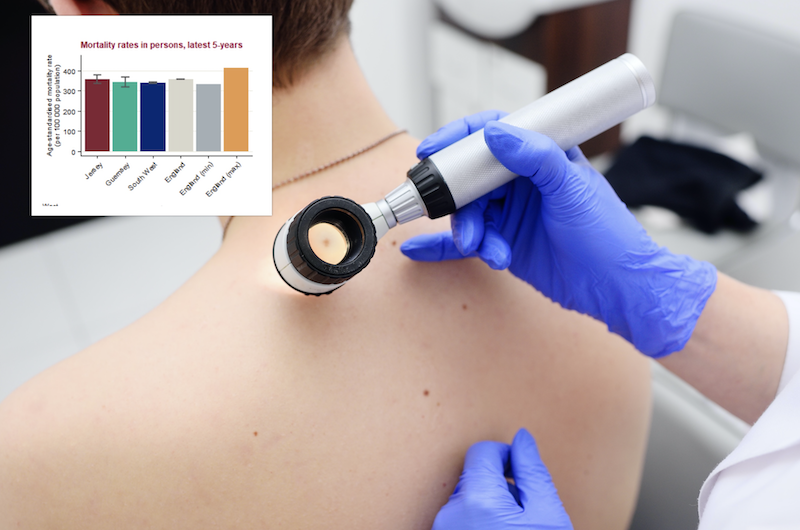


The Channel Islands Cancer Report 2020 has been released today, highlighting only minor differences in prevalence between the islands.
It’s produced by the National Cancer Registration and Analysis Service.
The statistics are drawn from the period 2003 – 2016 and included Alderney and Sark.

Pictured: The incidence rates from the latest 5 years in the report.
The key takeaways from the data collected are:
“For the most part the report gives a reassuring picture in terms of the prevalence rates for incident cancers and cancer deaths being in line with, and in some cases lower than, our nearby jurisdictions,” said Head of Health Intelligence, Public Health Services, Jenny Cataroche.
“One notable exception is for skin cancers, where the major risk factor is UV exposure from sunlight of sunbeds.”

Pictured: It’s important to, “be able to recognise the possible signs of a skin cancer”, said Ms Cataroche.
The report will be used to focus efforts on specific cancers that have shown high prevalence in the Channel Islands.
“It is estimated that 4 in 10 UK cancer cases are preventable,” said Chief Executive of the Health Improvement Commission, Dr Simon Sebire.
“The Commission’s work is critical to advancing local prevention efforts as much of our work focusses on the five leading behavioral and dietary risks of cancer.”
These risks have been highlighted as;
You can read the full report here.
Pictured top: The data will be used to help spot trends and focus treatment efforts.
Comments
Comments on this story express the views of the commentator only, not Bailiwick Publishing. We are unable to guarantee the accuracy of any of those comments.